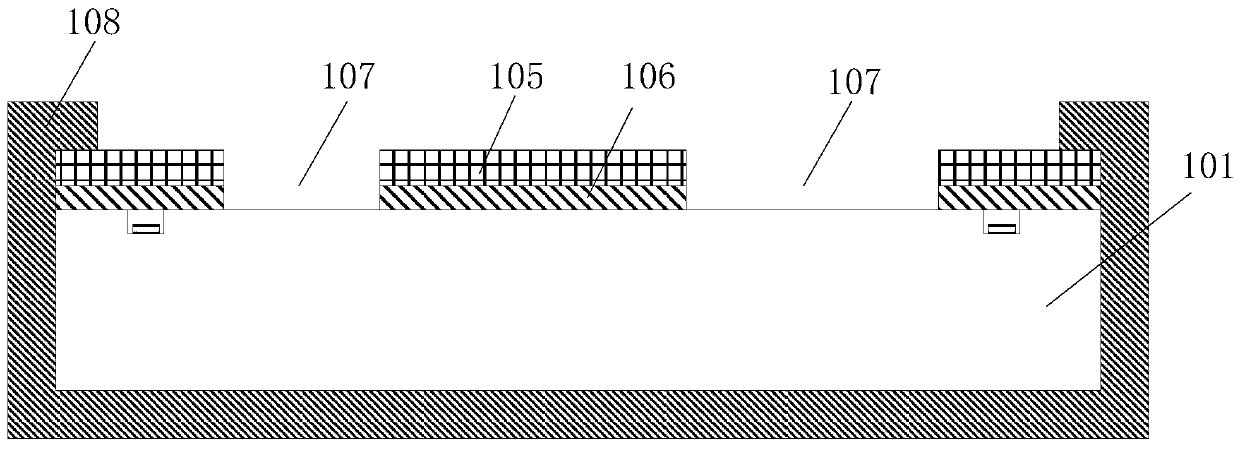Manufacturing method of glass cavity suitable for wafer-level vacuum packaging
A technology of vacuum packaging and manufacturing method, which is applied in the process of producing decorative surface effects, manufacturing microstructure devices, decorative arts, etc. The effect of lateral undercut, reduced surface undercut, and increased adhesion
- Summary
- Abstract
- Description
- Claims
- Application Information
AI Technical Summary
Problems solved by technology
Method used
Image
Examples
Embodiment Construction
[0037] The present invention will be further elaborated below in conjunction with embodiment.
[0038] In the first step, the TEMPAX glass sheet is successively treated with H at 110-130°C and a volume ratio of 4:1 2 SO 4 and H 2 o 2 The mixed solution, 75-85 ℃, NH with a volume ratio of 1:1:5 4 OH, H 2 o 2 and H 2 Mixture of O, 75-85°C, HCl, H with a volume ratio of 1:1:6 2 o 2 and H 2 The mixture of O was cleaned.
[0039] The second step is to use photolithography to make patterns on the glass surface, and use room temperature BOE solution to etch shallow grooves with a depth of 0.2 μm on the glass surface to remove the photoresist.
[0040] In the third step, the glass sheets are successively exposed to H with a volume ratio of 4:1 at 110-130°C. 2 SO 4 and H 2 o 2 The mixed solution, 75-85 ℃, NH with a volume ratio of 1:1:5 4 OH, H 2 o 2 and H 2 Mixture of O, 75-85°C, HCl, H with a volume ratio of 1:1:6 2 o 2 and H 2 The mixed solution of O was cleaned...
PUM
| Property | Measurement | Unit |
|---|---|---|
| depth | aaaaa | aaaaa |
| thickness | aaaaa | aaaaa |
| thickness | aaaaa | aaaaa |
Abstract
Description
Claims
Application Information
 Login to View More
Login to View More - R&D
- Intellectual Property
- Life Sciences
- Materials
- Tech Scout
- Unparalleled Data Quality
- Higher Quality Content
- 60% Fewer Hallucinations
Browse by: Latest US Patents, China's latest patents, Technical Efficacy Thesaurus, Application Domain, Technology Topic, Popular Technical Reports.
© 2025 PatSnap. All rights reserved.Legal|Privacy policy|Modern Slavery Act Transparency Statement|Sitemap|About US| Contact US: help@patsnap.com



